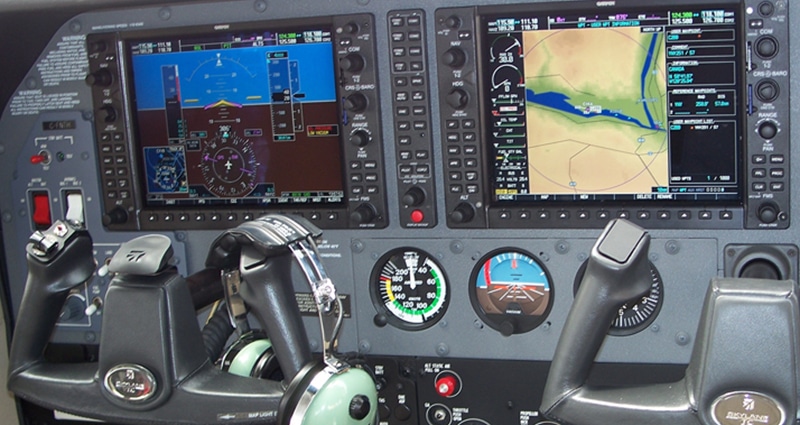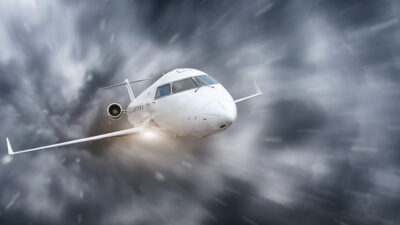Could Technology Be a Hindrance to Your Operation?

When Jim Lara had a new up-to-date avionics suite installed in his Baron last December, he faced a task even more daunting than selecting, installing and paying for the glass cockpit components: learning how to operate them.
“I’m a pretty inquisitive guy and I’m pretty patient. But the documentation for the system that we put in our aircraft was 1,200 pages. That’s a lot of reading,” said the principal of Gray Stone Advisors, based in Knoxville, TN.
Lara, secretary of NBAA’s Safety Committee, pointed out that the sixth item on the committee’s list of Top 10 safety concerns is the “impact of technology,” specifically the steep learning curve for constantly evolving avionics and ATC technologies.
Impeding Cockpit Safety
Lara applauded one manufacturer for its recent offering of classes for pilots transitioning to glass cockpits.
“They found that when this gear is retrofitted into aircraft that previously had steam gauges and the crew hasn’t been trained, as opposed to being an addition to safety, it can actually be a liability. You find yourself sitting there and wondering, ‘What is this doing and why isn’t it doing what I want it to do?'” said Lara. “We’re starting to see the need for comprehensive training.”
Along for the Ride
Mastering the automation can lead to another problem, Lara warned: erosion of basic piloting ability.
“One of the big things we’re seeing is that there’s a dependency on technology that contributes to the atrophy of basic stick and rudder skills,” he said. “So when the automation goes south, what happens?”
This follows a long-running industry trend, Lara continued, one that has seen revolutionary advances in cockpit automation under the guise of relieving pilot workload. “Engage all automation at wheels-up and don’t turn it off until the aircraft has finished auto-braking after landing. By doing this, we’re training for the least common denominator when we should be training for excellence,” Lara said. More companies are starting to recognize this and are beginning to mandate more actual stick time in their standard operating procedures, he said.
In addition, the NBAA Safety Committee is working with the FAA to create new instructional and check ride criteria that are more than simply “check-the-box” simulation exercises, but rather driven by data gathered during flight operations. “Where do we need to brush up?” he asked by way of example. “Are we having trouble on stabilized approaches? How do we handle upsets en route? All of this data is gathered as a product of our operations, a facility that we didn’t have in the past.” That process is also aided by technology, Lara said, because it can employ data gathered by Flight Data Recorders to monitor improvements in performance based on such training.
Double-Edged Concern
While the NBAA Safety Committee is concerned about technological advances outpacing pilots’ ability to adapt, Lara said there is also concern about failure to upgrade. By not keeping up with the pace of technological change, he warned, flight departments risk not being able to operate in the safest possible ways or in the most efficient airspace. Upgrades are now a way of life, he said.
“It used to be you’d have an aircraft for 20 years and then sell it complete with the avionics you had all along. But that’s no longer the case,” Lara said. “Now, you may be doing a major avionics upgrade every five to six years. You have to include it in your fiscal plan and in your training – you have to look ahead to both.”
Hear a Flight Plan podcast about how the steep learning curve for constantly evolving avionics and ATC technologies can have safety implications.

Founded in 1947 and based in Washington, DC, the National Business Aviation Association (NBAA) is the leading organization for companies that rely on general aviation aircraft to help make their businesses more efficient, productive and successful. The Association represents more than 9,000 companies and provides more than 100 products and services to the business aviation community, including the NBAA Business Aviation Convention & Exhibition, the world's largest civil aviation trade show.
http://www.nbaa.org/
© 2024 NBAA. All Rights Reserved.
Next ArticleRelated Posts

Understanding the Challenge of Turbulence-Related Injuries in Business Aviation
The challenge of managing air turbulence in business and private aviation is becoming increasingly evident due to the growing number of turbulence-related incidents affecting aircraft operators across the industry.

Leadership, Management and Safety: Embracing Compliance and Conformance Oversight
Aviation operations, and by default, safety, are based on the idea that regulatory requirements are fundamental to establishing a framework to achieve safe operations.

